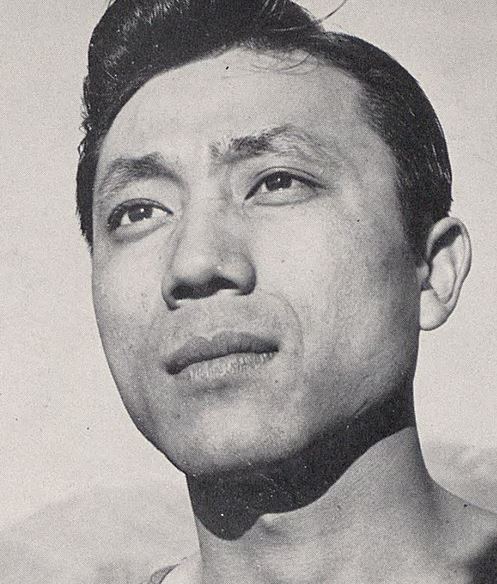By Alison Karki, AsAmNews Intern
For author Hayley Diep and illustrator Naomi Giddings, their upcoming novel Rising Above: The Wataru “Wat” Misaka Story is about more than just the biography of a Japanese American basketball player; it is about finding community through uncovering hidden stories.
Wataru “Wat” Misaka was the first person of color to play in the National Basketball Association (NBA) in 1947, which was then called the Basketball Association of America. He was born on December 21st, 1923 in Ogden, Utah to two Japanese immigrants.
Despite facing poverty and racial discrimination throughout his youth due to the Great Depression and World War II, Misaka never stopped doing what he loved: playing basketball. His passion for the sport led him to carry his high school to the state championships in 1940 and the regional championships in 1941. In his junior year of college, he earned the title, “The Most Valuable Player.”
He was selected by the New York Knicks as a point guard in 1947, which was the same year that Jackie Robinson became the first Black American to play in Major League Baseball.
In his later years, Wat declined an offer to play with the Harlem Globetrotters, and instead returned to Utah to pursue a career in engineering. He consistently led a life of simplicity and humility, and his success in basketball came simply from his love and dedication to the craft.
During the creation of this book, both Diep and Giddings were able to speak to Wat’s family, including his children, to learn more about his life. “He was just so tenacious,” Diep stated, “and he was doing this not because he wanted to be a groundbreaker or anything like that. He was just doing it because he loved the sport of basketball, and he was a good person.”
…
Diep, the author of the upcoming novel about Misaka, is a first-grade teacher in the Bay Area. She previously wrote the book, If You Give a Girl a Bike. Her passion for educating the youth is apparent in her role as a storyteller and writer.
She, along with Giddings (a Los Angeles-based illustrator), created the picture book for people of all ages to read.
“I wanted it to be a picture book because Wat’s story is a beautiful one for kids to hear. Like, this person just kept playing basketball even in the face of adversity,” Diep said. She continued: “He then walked away from the sport, at some point, because he had other dreams he wanted to pursue, and I think that is another good message for kids to learn: that you can chase multiple dreams, and you can change your mind.”
Both Diep and Giddings discussed the importance of children to learn about diverse stories early on in order to build empathy. “As a teacher, I know that kids are capable of so much! Speaking on important topics helps kids remove biases or stereotypes that they may have learned elsewhere,” Diep eloquently stated.
“I think often when we share these historical stories, it is easy to feel distant if we are only learning about them through textbooks or through black-and-white images,” Gidding’s said to AsAmNews. “From an illustrator’s perspective, illustrations ground those stories and make them feel more immediate and relatable, especially for young audiences.”
According to Giddings, Wat’s story is a personal one that is deeply linked with family history.
Giddings, who is a mixed-race Japanese American, was particularly ecstatic to take on this project with Diep because of the pride she held in her Japanese heritage. “I was really surprised that the first person of color in the NBA was a Japanese American that I’d never heard about,” she mentioned.
She then went on to say that the only other person in her family that knew of Misaka’s story was her Japanese grandfather, who read about Wat in newspapers in the 1940s.
“My grandparents were a bit younger than Wat, but they were actually in the relocation zone in the US back then, so they were both incarcerated in the internment camps when Wat was making these moves in his career,” Giddings beautifully expressed. “My grandfather and Wat both served in the US Army at the same time. It was very special for me to be able to hear about my grandfather’s story and how it relates to this bigger picture of Asian American history.”
Both Giddings and Diep want to share Wat’s story with the world because it is a testament to the power of community and solidarity.
“It wasn’t only Wat and his will that allowed him to be so successful; it was also his community,” Diep mentioned. “His teammates came together to make him feel welcome. We can learn from that and recognize the power of being a team in order to uplift people.”
Giddings added on, stating: “Community and solidarity with other people who are experiencing marginalization is so important. It is crucial to realize that the discrimination that we face is all interlinked, and we have to be in support of each other.”
The themes of community still ring true today, and Misaka’s legacy has fortunately become more prominent since people are finally starting to recognize non-white contributions. It is honorable that Diep and Gidding are highlighting such an under-reported story.
Their picture book, Rising Above: The Wataru “Wat” Misaka Story, will be released on November 14th and is available for pre-order now.
(Editor Note: 10 percent of your purchase of this book through bookshop.org via the links above will benefit AsAmNews as well as support local bookstores.)
AsAmNews is published by the non-profit, Asian American Media Inc.
We are supported through donations and such charitable organizations as the Robert Wood Johnson Foundation. All donations are tax deductible and can be made here.

